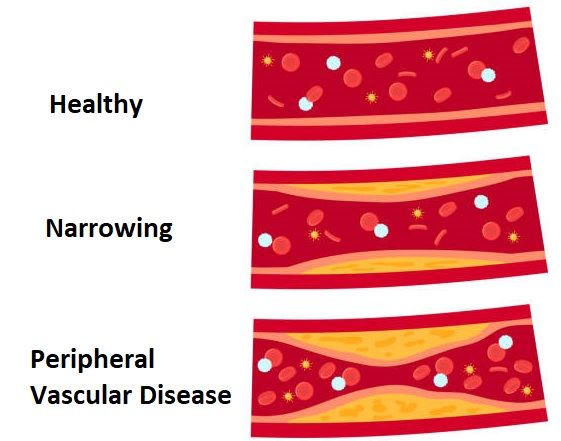Peripheral Vascular Disease Treatments in Ormond Beach, FL
What is peripheral vascular disease?
Peripheral vascular disease (PVD), also known as peripheral artery disease (PAD), is a condition characterized by the narrowing or blockage of the blood vessels that supply the legs and arms. It primarily affects the arteries, resulting in reduced blood flow to the extremities. PVD commonly occurs in the lower limbs.
What causes peripheral vascular disease?
The most common cause of PVD is atherosclerosis, a condition where fatty deposits (plaques) build up inside the arteries, narrowing the vessel walls. Other causes include inflammation of the blood vessels (vasculitis), blood clot formation (thrombosis), or damage to the blood vessels due to injury or certain medical conditions.
Several factors increase the risk of developing PVD, including:
- Smoking or tobacco use
- Diabetes
- High blood pressure
- High cholesterol levels
- Obesity
- Family history of PVD or cardiovascular disease
- Advancing age
- Sedentary lifestyle
- Certain medical conditions, such as kidney disease or autoimmune
What are the symptoms of peripheral vascular disease?
PVD often presents with symptoms in the legs and feet, including:
- Leg pain or cramping during physical activity (intermittent claudication)
- Leg pain at rest
- Numbness or weakness in the legs
- Coldness or changes in skin color in the affected limb
- Poor wound healing or slow-to-heal sores or ulcers on the legs or feet

What are some treatments for peripheral vascular disease in Ormond Beach, FL
The treatment of PVD aims to improve blood flow, manage symptoms, and reduce the risk of complications. The treatment options may include:
- Lifestyle modifications: Quitting smoking, regular exercise, healthy diet, weight management, and managing underlying conditions like diabetes and high blood pressure.
- Medications: Antiplatelet agents (such as aspirin), cholesterol-lowering drugs, and medications to control blood pressure or manage symptoms.
- Interventional procedures: Angioplasty, stenting, atherectomy, or bypass surgery may be considered to restore blood flow in severely affected arteries.
- Wound care: Proper wound management for ulcers or sores, including cleaning, dressings, and potential specialized therapies like hyperbaric oxygen therapy.
Patients can take steps to manage PVD and reduce symptoms by:
- Quitting smoking or avoiding tobacco use
- Regular exercise, as advised by a healthcare professional
- Proper foot care, including regular inspection and avoiding injuries
- Maintaining a healthy lifestyle, including a balanced diet and managing other underlying conditions
Not sure if you have peripheral vascular disease?
We can help you with a comprehensive examination to determine if you have PVD and guide you through treatment and management. We have been treating vascular patients for over 20 years. Stay on top of your health and prevent that small problem from becoming a big one.


